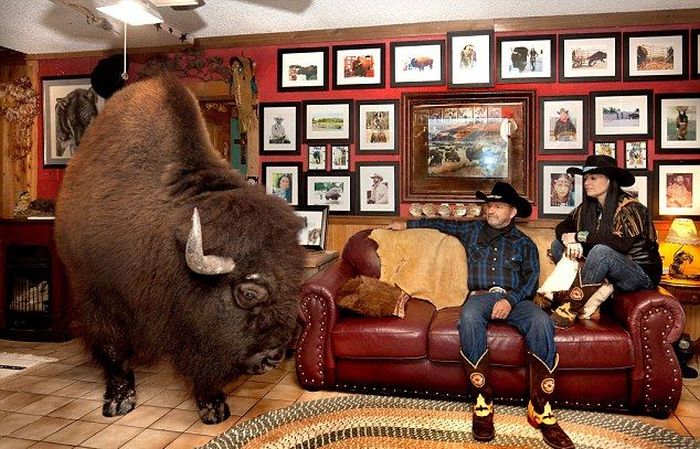|
|
Bison Pet
|
Bison were a keystone species, whose grazing pressure was a force that shaped the ecology of the Great Plains as strongly as periodic prairie fires and which were central to the lifestyle of Native Americans of the Great Plains. However, there is now some controversy over their interaction. "Hernando De Soto's expedition staggered through the Southeast for four years in the early 16th century and saw hordes of people but apparently did not see a single bison," Charles C. Mann wrote in 1491: New Revelations of the Americas Before Columbus. Mann discussed the evidence that Native Americans not only created (by selective use of fire) the large grasslands that provided the bison's ideal habitat but also kept the bison population regulated. In this theory, it was only when the original human population was devastated by wave after wave of epidemic (from diseases of Europeans) after the 16th century that the bison herds propagated wildly. In such a view, the seas of bison herds that stretched to the horizon were a symptom of an ecology out of balance, only rendered possible by decades of heavier-than-average rainfall. Other evidence of the arrival circa 1550-1600 in the savannas of the eastern seaboard includes the lack of places which southeast natives named after buffalo. Bison were the most numerous single species of large wild mammal on Earth.
What is not disputed is that before the introduction of horses, bison were herded into large chutes made of rocks and willow branches and then stampeded over cliffs. These buffalo jumps are found in several places in the U.S. and Canada, such as Head-Smashed-In Buffalo Jump. Large groups of people would herd the bison for several miles, forcing them into a stampede that would ultimately drive many animals over a cliff. The large quantities of meat obtained in this way provided the hunters with surplus, which was used in trade. A similar method of hunting was to drive the bison into natural corrals, such as the Ruby site.
To get the optimum use out of the bison, the Native Americans had a specific method of butchery, first identified at the Olsen-Chubbock archaeological site in Colorado. The method involves skinning down the back to get at the tender meat just beneath the surface, the area known as the "hatched area." After the removal of the hatched area, the front legs are cut off as well as the shoulder blades. Doing so exposes the hump meat (in the wood bison), as well as the meat of the ribs and the bison's inner organs. After everything was exposed, the spine was then severed and the pelvis and hind legs removed. Finally, the neck and head were removed as one. This allowed for the tough meat to be dried and made into pemmican.
Later when Plains Indians obtained horses, it was found that a good horseman could easily lance or shoot enough bison to keep his tribe and family fed, as long as a herd was nearby. The bison provided meat, leather, sinew for bows, grease, dried dung for fires, and even the hooves could be boiled for glue. When times were bad, bison were consumed down to the last bit of marrow.
|
|









